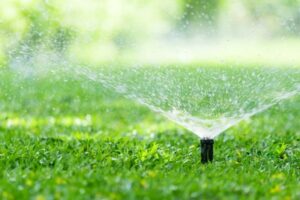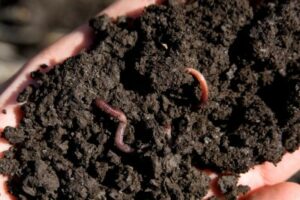If you think your lawn is just a patch of greenery or a platform to flaunt your exceptional lawn care skills, prepare to have your mind blown! Oh no, friends! Our lawns are, in fact, thriving ecosystems that hum with life and activity! They are bustling micro-cities for countless insects, an always-open diner for birds, and a top-notch air cleaner absorbing carbon dioxide and giving out oxygen. They are nature’s exchange system that ties us to a world extending far beyond our  garden fences.
garden fences.
Every time we run our mower across the lawn, we’re not just performing a weekly chore of trimming down grass. We are playing our part in this intricate, interconnected web of life. We’re not the bosses laying down rules; rather, we’re garden guardians, we’re caretakers, we’re the benevolent landlords of this small but bustling ecosystem party!
On the Surface: The Green Tapestry
Above the soil, what appears to be a simple expanse of green is actually a bustling botanical city. The blades of grass, like towering trees, provide a micro-habitat for a myriad of insects, from diligent ants to majestic butterflies. They offer a plentiful supply of food and a vast playground for birds, connecting us to the avian world in our very own backyards.
The grass isn’t just a feeding ground though. It serves an essential role by breathing in carbon dioxide and exhaling oxygen, just like other plants. So every time you’re out sipping coffee on your lawn, remember, you’re breathing air that’s been garden-refreshed!
The Underground: The Busy Basement
 But what’s a city without its bustling underbelly? The real magic, my friends, happens below the surface. The soil beneath your lawn is a labyrinth of life, teeming with microorganisms, insects, and earthworms. These tiny, often overlooked creatures, play an enormous role in maintaining your lawn’s health.
But what’s a city without its bustling underbelly? The real magic, my friends, happens below the surface. The soil beneath your lawn is a labyrinth of life, teeming with microorganisms, insects, and earthworms. These tiny, often overlooked creatures, play an enormous role in maintaining your lawn’s health.
Earthworms, “the unsung heroes of nature,” toil round the clock. They enrich the soil by digesting organic matter, increasing its nutrient content and improving its structure. This makes the soil more conducive for plant roots to thrive. And the insects? They help control harmful pests, contributing to a balanced and healthy lawn.
Our Role: The Caretakers
As much as we love the aesthetic appeal of a well-manicured lawn, it’s essential to remember that our role extends far beyond being lawn enthusiasts. We’re the good neighbors, the custodians of this lively patch of Mother Nature, and our actions can significantly affect the lawn ecosystem.
From choosing the right fertilizer to controlling the frequency of our mowing, each decision impacts the life that buzzes on, and hums beneath, our lawns. It’s a responsibility we shouldn’t take lightly, but it’s also a chance to actively participate in nurturing life, right in our own yards!
So, the next time you set foot on your lawn, remember, you’re stepping onto a vibrant stage where countless tiny dramas of nature unfold every second. Treat it with care, marvel at its complexity, and relish in the joy that comes from being part of this wonderful, living, breathing network of life.
5 Fascinating Facts About Your Lawn Ecosystem
- Microscopic Metropolis: There are more microorganisms in a teaspoon of soil than there are people on Earth! These minute beings, including bacteria, fungi, and protozoa, play a crucial role in breaking down organic matter and recycling nutrients in the soil.
- Worm Workforce: A healthy lawn can house up to a million earthworms per acre! These industrious little creatures improve soil quality by aerating the ground and enriching it with their nutrient-rich castings.
- Insect Oasis: Your lawn is a habitat for a host of insects. While some are pests, many others like ladybugs and spiders are beneficial, preying on harmful pests and helping to maintain a balanced ecosystem.
- Bird Buffet: Birds love lawns! Our green spaces serve as feeding grounds for many bird species, offering a smorgasbord of seeds, fruits, and insects. This makes lawns critical for bird conservation, especially in urban areas.
- Nature’s Air Purifier: Lawns, like all other plants, absorb carbon dioxide—a greenhouse gas—and release oxygen through photosynthesis. An acre of healthy lawn can absorb hundreds of pounds of carbon each year.

